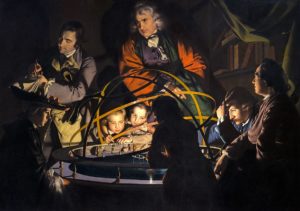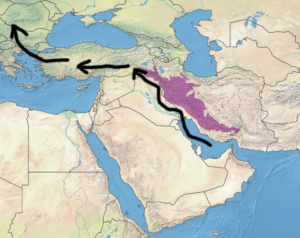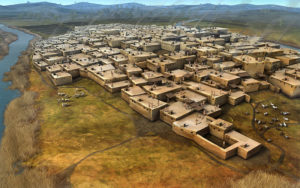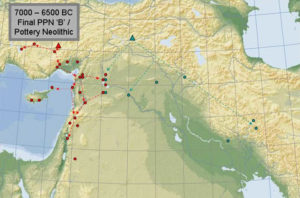 About 11,000 years ago, the last ice age on our planet ended. For a long time before then, much of our world was covered with ice and snow, and there were only about five million people on the planet.
About 11,000 years ago, the last ice age on our planet ended. For a long time before then, much of our world was covered with ice and snow, and there were only about five million people on the planet.
We can tell how cold the world was, and when, by examining the ice at places that never thaw out, like most of Greenland. Since the ice and snow build up every year, and by examining the chemicals left behind in each layer, we can be quite sure of these things. We have other reasons to think so as well.
At about 9,000 BC (that’s 11,000 years ago), as the ice age finally ended, those five million people (this number is a careful guess) walked out into a much larger world, and began filling it up.
From that point in time and forward, toward us, we can tell fairly well how these people lived. Before then, we can only guess.
So, let’s look at the first people we can understand.
These people seem to have lived in what is now the Persian Gulf during the ice age. That part’s a guess, but a careful one. Before about 13,000 BC, the Persian Gulf was dry, and had rivers running through it. It was a great place for people to live during an ice age. At about 13,000 BC, however – 15,000 years ago – temperatures rose fast and a lot of ice melted fast, flooding places near the seas and flooding the Persian Gulf. (Scientists call the event a meltwater pulse.)
It seems that these people went north, then had to survive a few thousand years there (in or near what is now Armenia), because the weather became very cold again. When the weather finally got warm and stayed warm (between 10,000 BC and 9,000 BC), they started moving westward through what is now Turkey. At that point we become very sure about where they were and what they did, because we’ve found the cities where they lived and many other things they left behind.

These people – and there doesn’t seem to be any name for them – moved slowly westward: first through what is now Turkey, then across the sea to Greece, and then north and west, all the way through Europe, until they stopped in Ireland between 4,000 BC and 3,000 BC.
Here is an illustration of their first city, at a place now called Catalhoyuk (cha-TAL-hoy-YOOK). Between eight and ten thousand people lived there, between about 7,200 and 6,000 BC:

We know a great deal about how these people lived. We know, for example, that they used and traded obsidian, which is a type of glass created in volcanoes. When it breaks, it is has a very sharp edge, which people used for knives and other cutting tools. It may also be that they used it as currency (money), but that’s not yet certain.
We can learn a great deal from obsidian because of three facts:
- Chemical testing tells us which volcano the obsidian came from, since the chemicals from each one are a little bit different.
- We know where we find it.
- Once a piece of obsidian is cut, water seeps in at a very predictable rate (this is called hydration), and that allows us to tell how long ago it was cut out of the lava in front of its volcano.
And so we know, very certainly, that there was a great deal of obsidian trading going on by the time Catalhoyuk was occupied. In fact, below is a map of the obsidian trade at that time.

